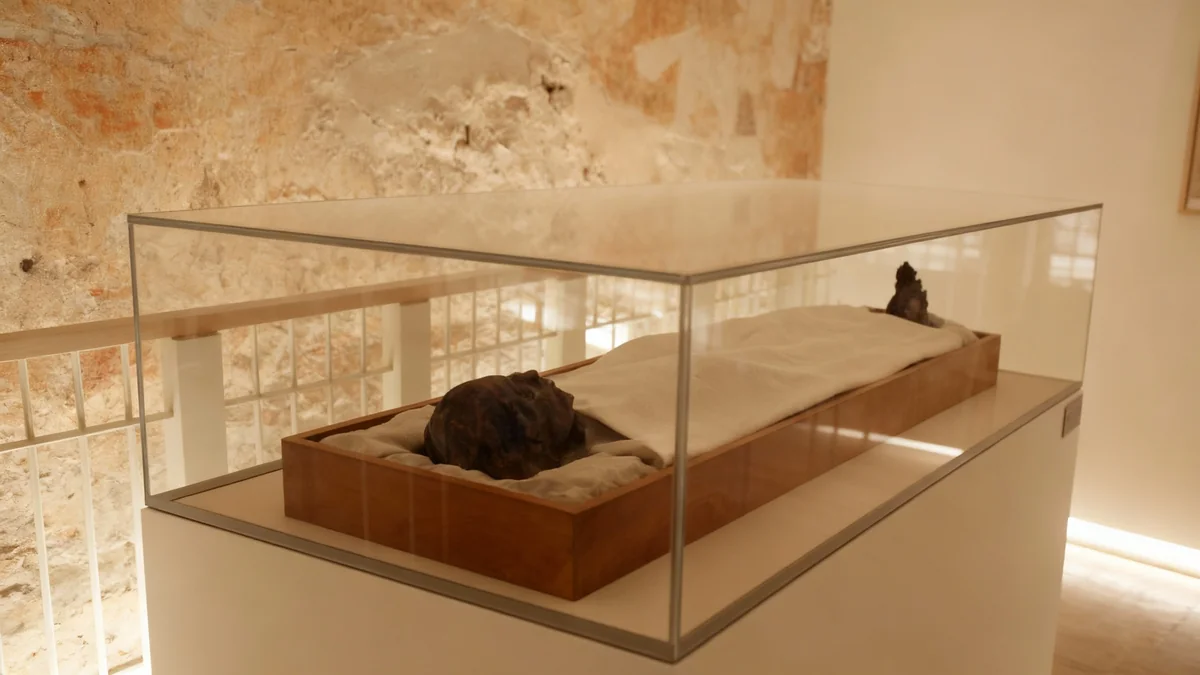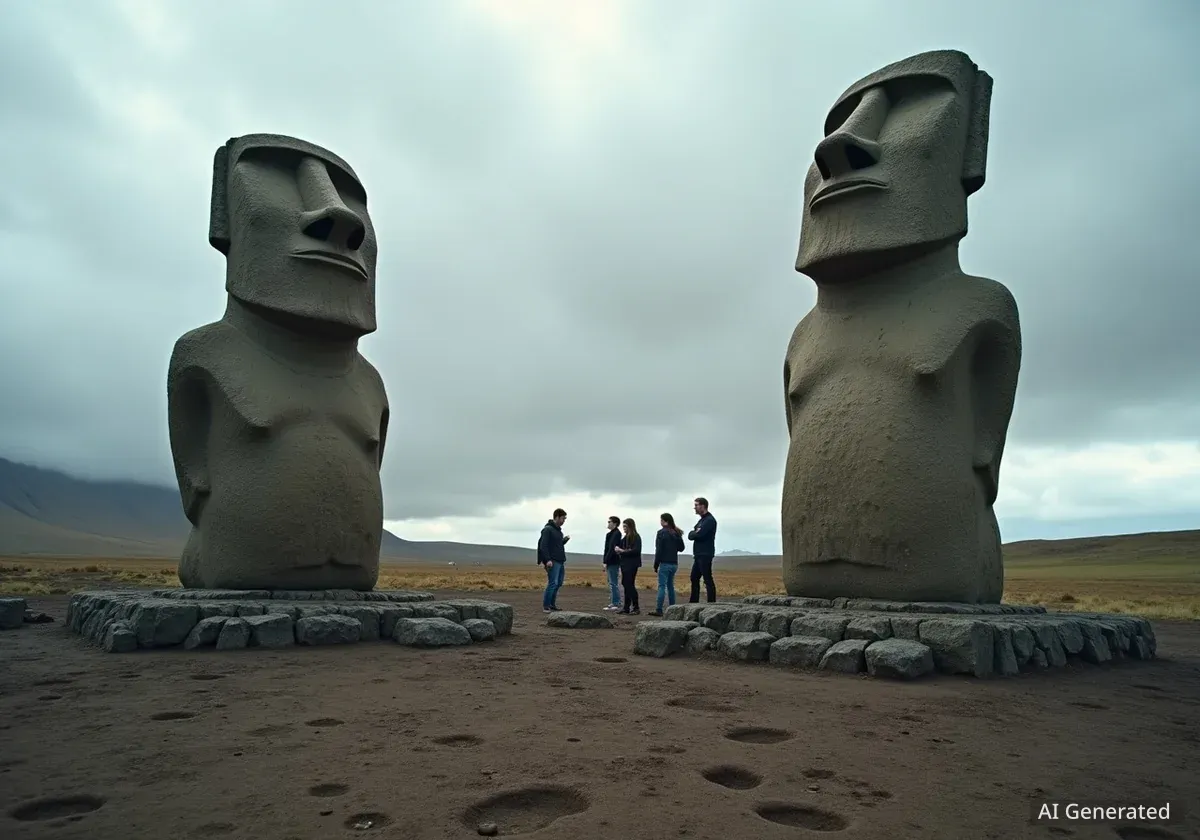Paleontologists have announced the discovery of a new species of carnivorous dinosaur in Oregon, a significant find made even more remarkable by its last meal found preserved inside its fossilized stomach: the arm of a crocodile-like reptile. The fossil provides a rare, direct glimpse into the predator-prey dynamics of the Late Cretaceous period.
Key Takeaways
- A new species of carnivorous dinosaur has been identified from a fossil discovered in Oregon.
- The fossil includes the preserved arm of an ancient crocodilian, confirming its last meal.
- This type of preservation, known as gut contents, is extremely rare and offers direct evidence of the dinosaur's diet.
- The discovery helps scientists better understand the food web and ecosystem of the region approximately 75 million years ago.
A Landmark Discovery in Oregon
A team from the University of Oregon's Museum of Natural and Cultural History unearthed the fossil during an expedition in a remote region of the state known for its Cretaceous rock formations. The specimen was partially exposed after a recent landslide, revealing several large vertebrae.
It was only during the careful excavation and preparation process back at the university's lab that researchers noticed the smaller, distinct bones located within the dinosaur's rib cage. Further analysis confirmed these bones belonged to a different animal.
The Importance of Gut Contents
Fossilized gut contents, or bromalites, are exceptionally rare finds in the world of paleontology. While bite marks on bones can suggest predator-prey interactions, finding the remains of a meal inside a predator provides undeniable proof of what it ate shortly before it died.
The Predator and Its Prey
The newly identified dinosaur has been named Oreodon raptor, which translates to "Oregon tooth plunderer." It is believed to be a medium-sized theropod, a group of bipedal, carnivorous dinosaurs that includes Tyrannosaurus rex and Velociraptor. Researchers estimate Oreodon raptor measured about 20 feet in length and weighed close to a ton.
Its prey was identified as a small, ancient crocodilian species common to the freshwater river systems of that era. The preserved limb is a complete forearm, including the articulated bones of the wrist and hand, suggesting the dinosaur swallowed large portions of its prey whole or in large chunks.
"Finding a new species is always exciting, but finding one with its last meal preserved is a paleontological jackpot," stated Dr. Alistair Reed, the lead paleontologist on the project. "It's a frozen moment in time, giving us a level of detail we usually can only guess at."
Reconstructing an Ancient Food Web
This discovery offers more than just information about a single dinosaur; it helps build a more complete picture of the entire ecosystem. The presence of Oreodon raptor and its crocodilian prey confirms that this region was a dynamic environment with complex predator-prey relationships.
Scientists can now confidently place this new dinosaur as an apex or near-apex predator in its habitat, likely competing with other carnivores for resources. The finding suggests it was a versatile hunter, capable of preying on both land and semi-aquatic animals.
Fossil Preservation Facts
- Rare Evidence: It is estimated that fewer than 1% of all carnivorous dinosaur skeletons ever found contain identifiable gut contents.
- Digestive Clues: The lack of heavy acid etching on the prey's bones suggests the dinosaur died within hours of its meal, before digestion could fully break them down.
- Geological Luck: For this level of preservation to occur, the dinosaur had to be buried rapidly in sediment, likely in a flood or mudslide, which protected the delicate contents from scavengers and decomposition.
What Happens Next
The research team is now conducting further analysis on the fossil. They are using advanced imaging technology, such as CT scans, to create a detailed 3D model of the skeleton and the stomach contents without damaging the specimen. This will allow them to study the bite force and feeding mechanics of Oreodon raptor.
The findings have been published in the latest issue of the Journal of Vertebrate Paleontology, where they are expected to generate considerable discussion among scientists. The fossil will eventually be put on public display at the University of Oregon's museum, offering a unique window into the prehistoric world.
According to the research paper, this discovery underscores the potential for new finds in regions not traditionally known for major dinosaur discoveries, highlighting the importance of continued exploration and research across North America.




